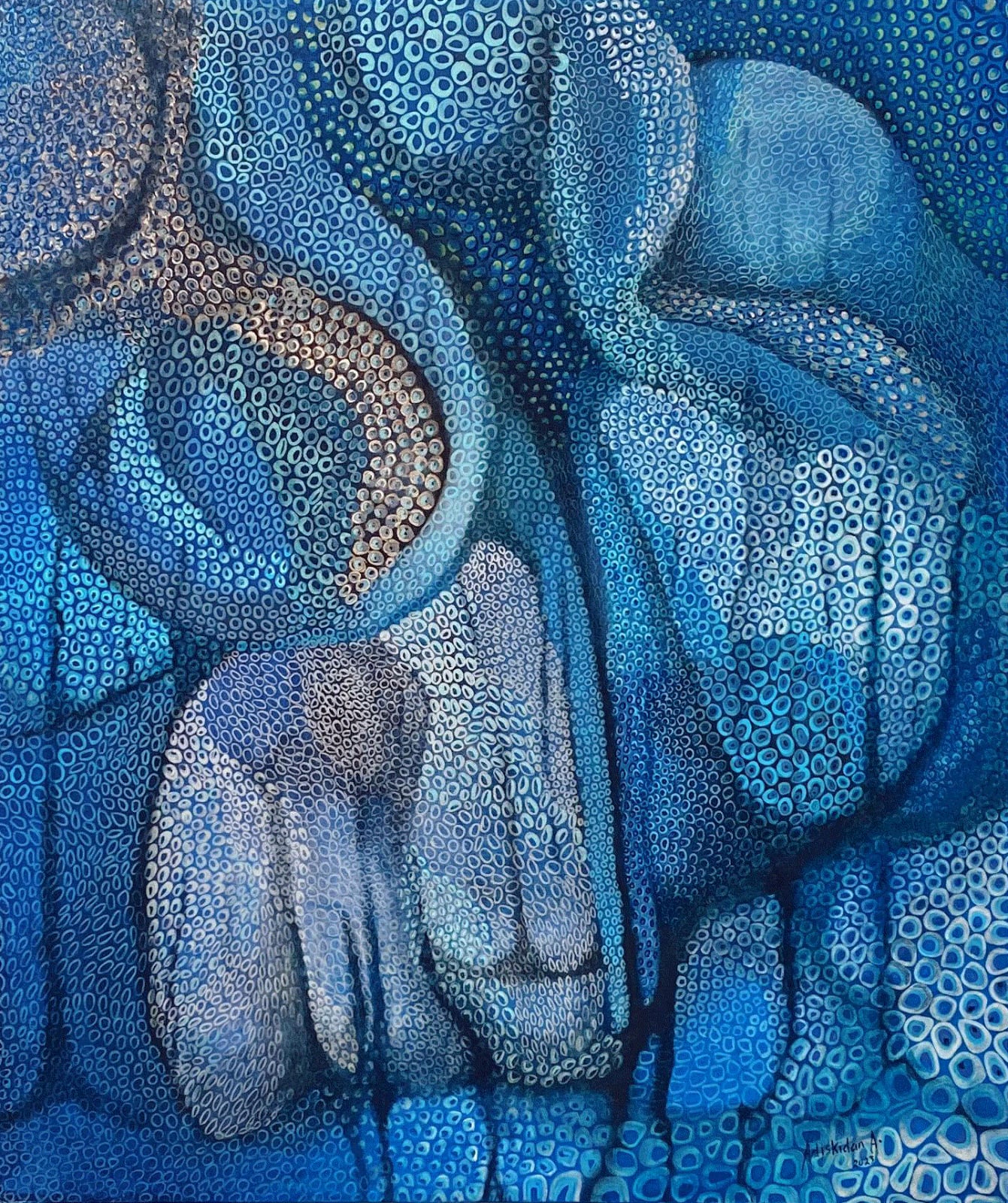Abu Dhabi Art Fair: Amel Bashier and Adiskidan Ambaye
Addis Fine Art is pleased to announce its participation in the Abu Dhabi Art Fair. The gallery will be presenting a dual exhibition of artworks by Amel Bashier and Adiskidan Ambaye. Showcasing her signature pointillist style, Amel’s work explores the position of women in Sudan and critiques the ongoing conflict in her homeland. Adiskidan’s sculpture’s are emotive and tactile reflections on the natural world, with her interest in gesture and marking carrying through her works on canvas.
The Sudanese artist, Amel Bashier, born in 1981, draws inspiration from the strength and wisdom of her female ancestors and the environment, particularly those who fought and struggled for their rights. She uses their stories both as a source of vitality for her creative process and as a point of comparison to the continued battle of the modern-day Sudanese women's rights movement.
In her intricate pen and ink drawings and pointillist paintings, majestic female figures redolent of ancient Nubian civilisation gaze impassively at the viewer, surrounded by plants, birds, books, and trees. Meticulously and methodically, Bashier applies thousands of small dots from the nib of her pen to create an imperceptibly solid composition. Her artistic practise also offers her personal catharsis from the traumas endured in her homeland. A message of peace, reconciliation, and forgiveness for the crimes committed during Sudan's bloody civil wars is conveyed throughout her work.
Adiskidan Ambaye’s wooden sculptures appear moulded from a single block of wood but are actually composed of as many as sixty handcrafted, smaller slices of plywood. The ringed markings orbiting the surface of each segment represent an individual piece fused to form the whole. Ambaye has described this process as sculpting “from the inside out”. These cyclical markings also conjure images of the naturally occurring concentric circles found in trees, signifying age, life, and death, as they are only visible once the tree has been cut down.
By sanding the rough and brittle surface, Ambaye can rid it of blemishes or “erase” them as she could in her sketches, like an eraser with pencil marks. Colour is added with the aid of a blow torch, darkening the wood to a colour reminiscent of a tree’s bark. She wields the blowtorch as she would a pencil as she shades sections of the work. Sprouting upwards and contorted in impossible angles, the sculptures are visualised emotions and life stories. However, this is not what Ambaye wishes the viewer to perceive; she states that she does not seek to influence people’s interpretation of her work and rather hopes they will project their own judgements.






